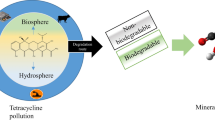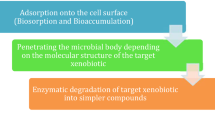Abstract
Two anthelmintic macrocyclic lactones—ivermectin and moxidectin—have revolutionized parasite control in cattle. These drugs are only partly metabolized by livestock, and the main route of excretion is via feces. In seasonally inundated floodplains, cattle feces come into direct contact with surface water. Important differences in pharmacokinetics and pharmacodynamics between these drugs may bear on their ecotoxicology in aquatic ecosystems. Moxidectin strongly binds to organic matter and thereby may be consumed in aquatic food webs, but there is a scarcity of data on toxicity to freshwater invertebrates. The objectives of this work were to determine the effect of moxidectin spiked in cattle dung on survival and growth of three representative aquatic invertebrates: the zooplankton Ceriodaphnia dubia, the amphipod Hyalella curvispina, and the snail Pomacea canaliculata. Moxidectin-laced dung was added in microcosms and concentrations were measured in water, sediment + dung, roots of the aquatic plant Salvinia biloba, and the aforementioned invertebrates. The influence of moxidectin on nutrient concentrations was also evaluated. Dung was spiked with moxidectin to attain concentrations of 750, 375 and 250 µg kg−1 dung fresh weight, approximating those found in cattle dung at days 2, 3, and 5 following subcutaneous injection. Concentrations of moxidectin in dung during the first week of excretion were lethally toxic for the tested invertebrate taxa. The persistence of moxidectin in the sediment + dung and the uptake of the drug in roots of S. biloba increase its potential exposure to aquatic food webs. Moxidectin also reduced the rate of release of soluble reactive phosphorus to the water.


Similar content being viewed by others
References
Allen YT, Thain JE, Haworth S, Barry J (2007) Development and application of long-term sublethal whole sediment tests with Arenicola marina and Corophium volutator using ivermectin as the test compound. Environ Poll 146:92–99
Awasthi A (2012) Stability evaluation of selected anthelmintic macrocyclic lactone compounds and formulations. Doctoral dissertation. University of Auckland
Boulding EG, Hay TK (1993) Quantitative genetics of shell form of an intertidal snail: constraints on short-term response to selection. Evolution 47:576–592
Bousquet-Mélou A, Mercadier S, Alvinerie M, Toutain PL (2004) Endectocide exchanges between grazing cattle after pour-on administration of doramectin, ivermectin and moxidectin. Int J Parasitol 34:1299–1307
Boxall ABA, Fogg LA, Kay P, Blackwell PA, Pemberton EJ, Croxford A (2004) Veterinary medicines in the environment. Rev Environ Contam Toxicol 180:1–91
Butters MP, Kobylinski KC, Deus KM, Da Silva IM, Gray M, Sylla M, Foy BD (2012) Comparative evaluation of systemic drugs for their effects against Anopheles gambiae. Acta Trop 121:34–43
Campbell WC, Fisher MH, Stapley EO, Albers-Schonberg G, Jacob TA (1983) Ivermectin: a potent new antiparasitic agent. Science 221:823–828
Charfi A, Sahnoun RD, Bouaziz J (2013) Characterization and mechanical properties of phosphate-kaolin clay. Powder Technol 235:633–639
Chen YS, Butler JN, Stumm W (1973) Kinetic study of phosphate reaction with aluminum oxide and kaolinite. Environ Sci Technol 7:327–332
Cunningham FM, Elliott J, Lees P (2010) Comparative and veterinary pharmacology. Springer, Berlin
Davies IM, Gillibrand PA, McHenery JG, Rae GH (1998) Environmental risk of ivermectin to sediment dwelling organisms. Aquaculture 163:29–46
Egeler P, Gilberg D, Fink G, Duis K (2010) Chronic toxicity of ivermectin to the benthic invertebrates Chironomus riparius and Lumbriculus variegates. J Soils Sediments 10:368–376
Emerson K, Russo RC, Lund RE, Thurston RV (1975) Aqueous ammonia equilibrium calculations: effect of pH and temperature. J Fish Board Canada 32:2379–2383
Fincher GT, Wang GT (1992) Injectable moxidectin for cattle: effects on two species of dung-burying beetles. Southwest Entomol (USA)
Gächter R, Meyer JS (1993) The role of microorganisms in mobilization and fixation of phosphorus in sediments. In: Proceedings of the third international workshop on phosphorus in sediments. Springer, Dordrecht, pp. 103–121
Garr AL, Posch H, McQuillan M, Davis M (2012) Development of a captive breeding program for the Florida apple snail. Pomacea paludosa: relaxation and sex ratio recommendations. Aquaculture 370:166–171
Gomot-de Vaufleury AGD, Pihan F (2002) Methods for toxicity assessment of contaminated soil by oral or dermal uptake in land snails: metal bioavailability and bioaccumulation. Environ Toxicol Chem 21:820–827
Hammer UT, Harper D, Ryan P (2001) PAST: paleontological statistics software package for education and data analysis. Palaeontol Electron 4:1–9
Hempel H, Scheffczyk A, Schallnaß HJ, Lumaret JP, Alvinerie M, Römbke J (2006) Toxicity of four veterinary parasiticides on larvae of the dung beetle Aphodius constans in the laboratory. Environ Toxicol Chem 25:3155–3163
Herd R (1995) Endectocidal drugs: ecological risks and counter-measures. Int J Parasitol 25:875–885
Hilton J, Rigg E (1983) Determination of nitrate in lake water by the adaptation of the hydrazine-copper reduction method for use on a discrete analyser: performance statistics and an instrument- induced difference from segmented flow conditions. Analyst 108:1026–1028
Hou D, He J, Lü C, Sun Y, Zhang F, Otgonbayar K (2013) Effects of environmental factors on nutrients release at sediment-water interface and assessment of trophic status for a typical shallow lake, Northwest China. The Sci World J 2013:1–16
Hupfer M, Lewandowski J (2008) Oxygen controls the phosphorus release from lake sediments a long lasting paradigm in limnology. Int Rev Hydrobiol 93:415–432
King DG, Davies IM (1987) Laboratory and field studies of the accumulation of inorganic mercury by the mussel Mytilus edulis (L). Mar Pollut Bulletin 18:40–45
Kita K, Shiomi K, Ömura S (2007) Advances in drug discovery and biochemical studies. Trends Parasitol 23:223–229
Koops HP, Pommerening-Röser A (2001) Distribution and ecophysiology of the nitrifying bacteria emphasizing cultured species. FEMS Microbiol Ecol 37:1–9
Koroleff F (1970) The above paper revised. Int Con Explor Sea. Information on techniques and methods for sea water analysis. Interlab Rep 3:19–22
Kövecses J, Marcogliese DJ (2005) Avermectins: potential environmental risks and impacts on freshwater ecosystems in Quebec Scientific and technical report ST-233E Environment Canada. St Lawrence Centre, Montreal
Lifschitz A, Virkel G, Imperiale F, Sutra JF, Galtier P, Lanusse C, Alvinerie M (1999) Moxidectin in cattle: correlation between plasma and target tissues disposition. J Vet Pharmacol Therapeutics 22:266–273
Lifschitz A, Virkel G, Sallovitz J, Sutra JF, Galtier P, Alvinerie M, Lanusse C (2000) Comparative distribution of ivermectin and doramectin to parasite location tissues in cattle. Vet Parasitol 87:327–338
Lingpeng D, Wanxian W, Xinjiao D, Renyong H, Xuyang N (2011) Molluscicidal activity of cardiac glycosides from Nerium indicum against Pomacea canaliculata and its implications for the mechanisms of toxicity. Environ Toxicol Pharmacol 32:226–232
Lumaret JP, Errouissi F, Floate K, Römbke J, Wardhaugh K (2012) A Review on the toxicity and non-target effects of macrocyclic lactones in terrestrial and aquatic environments. Curr Pharm Biotechnol 13:1004–1060
Mackay D, Fraser A (2000) Bioaccumulation of persistent organic chemicals: mechanisms and models. Environ Pollut 110:375–391
Maine MA, Hammerly JA, Leguizamon MS, Pizarro MJ (1992) Influence of the pH and redox potential on phosphate activity in the Parana Medio system. Hydrobiology 228:83–90
McKellar QA, Benchaoui HA (1996) Avermectins and milbemycins. J Vet Pharmacol Ther 19:331–351
Mesa LM, Lindt I, Negro L, Gutiérrez MF, Mayora G, Montalto L, Ballent M, Lifschitz A (2017) Aquatic toxicity of ivermectin in cattle dung assessed using microcosms. Ecotoxicol Environ Saf 144:422–429
Murphy J, Riley JP (1962) A modified single solution method for the determination of phosphate in natural waters. Anal Chem Acta 27:31–36
OECD (2004) Guidelines for the testing of chemical-218. Sediment-water Chironomid Toxicity Test Using Spiked Sediment, Organisation for Economic Co-operation and development
OECD (2006) Guidance Document on Simulated Freshwater Lentic Field Tests (Outdoor Microcosms and Mesocosms). OECD Series on Testing and Assessment, No 53. Organisation for Economic Co-operation and Development, Paris
Omura S (2002) Macrolide antibiotics: chemistry, biology, and practice. Academic, Tokyo
Park JH, Choi JH, Abd El-Aty AM, Park JS, Kim BM, Na TW, Park KH, Yang A, Rahman MM, Shim JH (2013) Development of an extraction method for the determination of avermectins in soil using supercritical CO2 modified with ethanol and liquid chromatography-tandem mass spectrometry. J Sep Sci 36:148–155
Prichard R, Ménez C, Lespine A (2012) Moxidectin and the avermectins: consanguinity but not identity. Int J Parasitol: Drugs and Drug Resistance 2:134–153
PROSAP (2009) Estrategia provincial para el sector agroalimentario Provincia de Entre Ríos Ministerio de Agricultura. Ganadería y Pesca de la Nación [en línea] www.desarrolloentrerrianowordpress.com
Quintana RD, Vicari R, Magnano A, Madanes N (2014) Resiliencia de humedales frente al cambio climático En Pascale. In: Zubillaga CM, Taboada N (eds) Los suelos. la producción agropecuaria y el cambio climático: avances en la Argentina Ministerio de Agricultura. Ganadería y Pesca (Argentina)
Rohlf FJ (2006) TpsDig version 210. Department of Ecology and Evolution, State University of New York, Stony Brook
Rohrer SP, Arena JP (1995) Ivermectin interactions with invertebrate ion channels. In: Molecular action of insecticides on ion channels. ACS Symposium Series, Rahway, pp 264–283
Ruamthum W, Visetson S, Milne JR, Bullangpoti V (2010) Toxicity of botanical insecticides on golden apple snail (Pomacea canaliculata). Commun Agric Appl Biol Sci 75:191–197
Saigo M, Marchese M, Montalto L (2009) Hábitos alimentarios de Hyalella curvispina Shoemaker. 1942 (Amphipoda: Gammaridea) en ambientes leníticos de la llanura aluvial del río Paraná Medio. Nat Neotropicalis 1:43–59
Sanderson H, Laird B, Pope L, Brain R, Wilson C, Johnson D, Solomon K (2007) Assessment of the environmental fate and effects of ivermectin in aquatic mesocosms. Aquat Toxicol 85:229–240
Schweitzer N, Fink G, Ternes TA, Duis K (2010) Effects of ivermectin-spiked cattle dung on a water–sediment system with the aquatic invertebrates Daphnia magna and Chironomus riparius. Aquat Toxicol 97:304–313
Steel JW, Wardhaugh KG (2002) Ecological impact of macrocyclic lactones on dung fauna. In: Vercruysse J, Rew RS (eds) Macrocyclic lactones and antiparasitic therapy. CAB International, Wallingford, pp 141–162
Strong L, Wall R (1994) Effects of ivermectin and moxidectin on the insects of cattle dung. Bull Entomol Res 84:403–409
Suarez VH (2002) Helminthic control on grazing ruminants and environmental risks in South America. Vet Res 33:563–573
Suarez VH, Lifschitz AL, Sallovitz JM, Lanusse CE (2003) Effects of ivermectin and doramectin faecal residues on the invertebrate colonization of cattle dung. J Appl Entomol 127:481–488
Thain JE, Davies IM, Rae GH, Allen YT (1997) Acute toxicity of ivermectin to the lug worm Arenicola marina. Aquaculture 159:47–52
Tolls J (2001) Sorption of veterinary pharmaceuticals in soils: a review. Environ Sci Technol 35:3397–3406
Van den Brink PJ, Blake N, Brock TC, Maltby L (2006) Predictive value of species sensitivity distributions for effects of herbicides in freshwater ecosystems. Hum Ecol Risk Assess 12:645–674
Van Roon MR (2000) The suitability of the gastropod snail Amphibola creneta as a bio-monitor of heavy metals in estuaries Working Paper 00-3 Planning Department. University of Auckland, New Zealand
Vellarkad VN, Ghose AK, Revankar GR, Robins RK (1989) Atomic physicochemical parameters for three dimensional structure directed quantitative structure-activity relationships. Additional parameters for hydrophobic and dispersive interactions and their application for an automated superposition of certain naturally occurring nucleoside antibiotics. J Chem Inf Comp Sci 29:163–172
Acknowledgements
The authors thank Dr. Stephen Hamilton for critical reading of the manuscript and constructive suggestions. This research was supported by the Consejo Nacional de Investigaciones Científicas y Técnicas (CONICET) and ASaCTeI (Project code 2010-087-16).
Author information
Authors and Affiliations
Corresponding author
Rights and permissions
About this article
Cite this article
Mesa, L.M., Hörler, J., Lindt, I. et al. Effects of the Antiparasitic Drug Moxidectin in Cattle Dung on Zooplankton and Benthic Invertebrates and its Accumulation in a Water–Sediment System. Arch Environ Contam Toxicol 75, 316–326 (2018). https://doi.org/10.1007/s00244-018-0539-5
Received:
Accepted:
Published:
Issue Date:
DOI: https://doi.org/10.1007/s00244-018-0539-5




